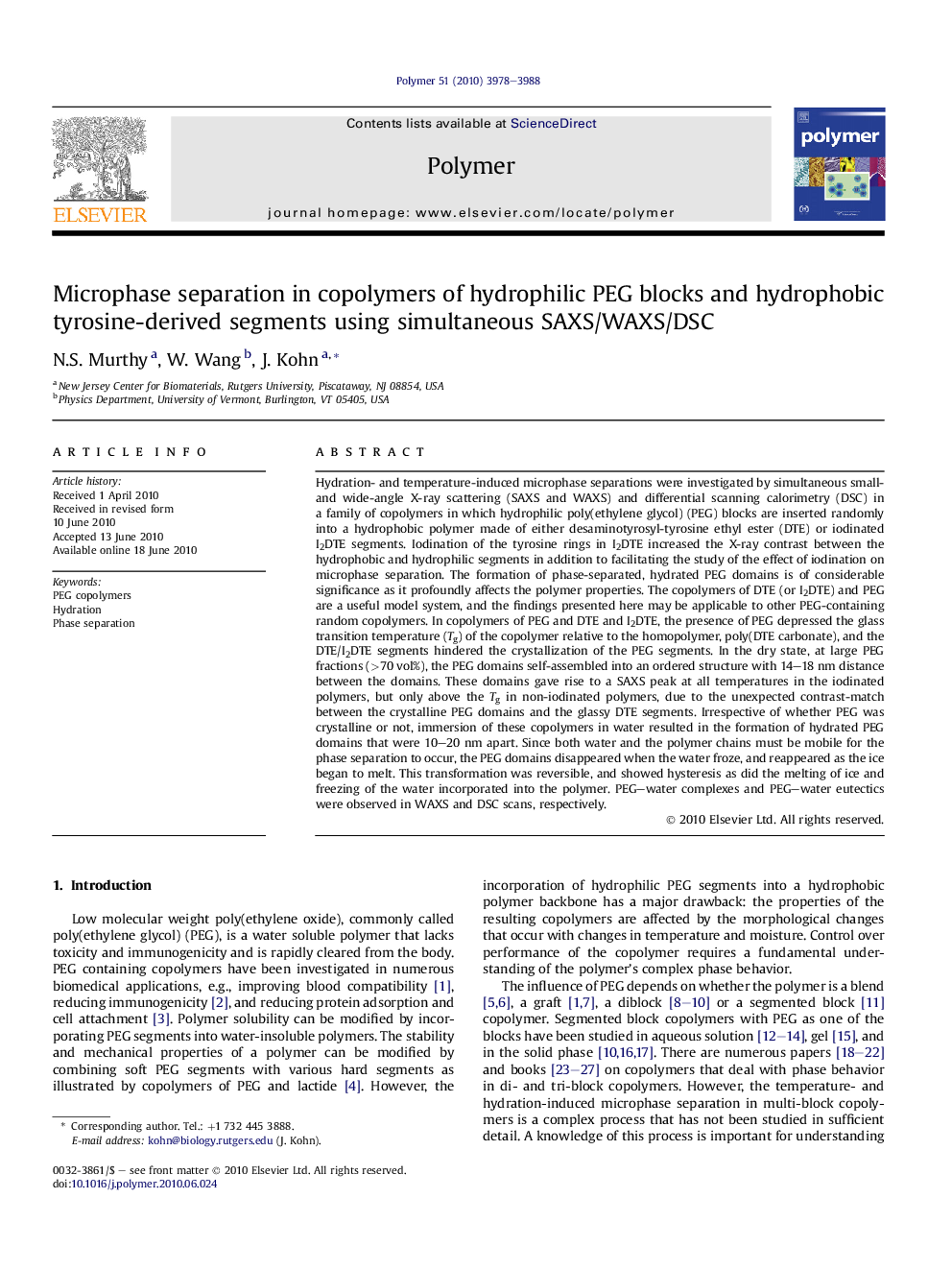| کد مقاله | کد نشریه | سال انتشار | مقاله انگلیسی | نسخه تمام متن |
|---|---|---|---|---|
| 5183569 | 1381022 | 2010 | 11 صفحه PDF | دانلود رایگان |

Hydration- and temperature-induced microphase separations were investigated by simultaneous small- and wide-angle X-ray scattering (SAXS and WAXS) and differential scanning calorimetry (DSC) in a family of copolymers in which hydrophilic poly(ethylene glycol) (PEG) blocks are inserted randomly into a hydrophobic polymer made of either desaminotyrosyl-tyrosine ethyl ester (DTE) or iodinated I2DTE segments. Iodination of the tyrosine rings in I2DTE increased the X-ray contrast between the hydrophobic and hydrophilic segments in addition to facilitating the study of the effect of iodination on microphase separation. The formation of phase-separated, hydrated PEG domains is of considerable significance as it profoundly affects the polymer properties. The copolymers of DTE (or I2DTE) and PEG are a useful model system, and the findings presented here may be applicable to other PEG-containing random copolymers. In copolymers of PEG and DTE and I2DTE, the presence of PEG depressed the glass transition temperature (Tg) of the copolymer relative to the homopolymer, poly(DTE carbonate), and the DTE/I2DTE segments hindered the crystallization of the PEG segments. In the dry state, at large PEG fractions (>70Â vol%), the PEG domains self-assembled into an ordered structure with 14-18Â nm distance between the domains. These domains gave rise to a SAXS peak at all temperatures in the iodinated polymers, but only above the Tg in non-iodinated polymers, due to the unexpected contrast-match between the crystalline PEG domains and the glassy DTE segments. Irrespective of whether PEG was crystalline or not, immersion of these copolymers in water resulted in the formation of hydrated PEG domains that were 10-20Â nm apart. Since both water and the polymer chains must be mobile for the phase separation to occur, the PEG domains disappeared when the water froze, and reappeared as the ice began to melt. This transformation was reversible, and showed hysteresis as did the melting of ice and freezing of the water incorporated into the polymer. PEG-water complexes and PEG-water eutectics were observed in WAXS and DSC scans, respectively.
Journal: Polymer - Volume 51, Issue 17, 4 August 2010, Pages 3978-3988